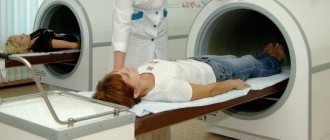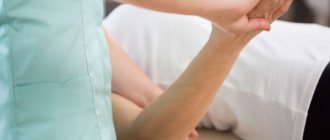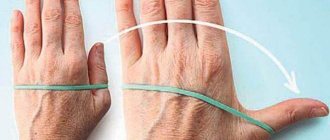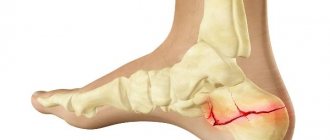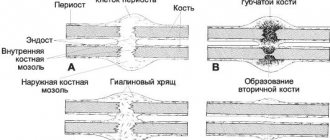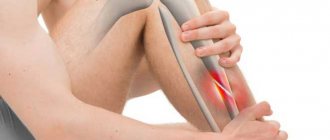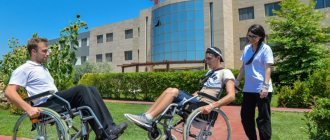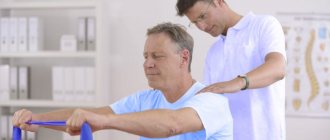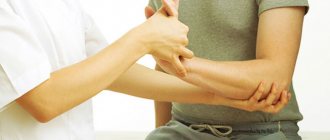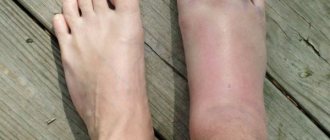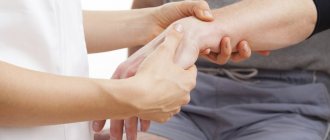In the first few hours after a fracture, osteosynthesis is possible - fixation of bone fragments using special structures. The purpose of the process is to ensure immobility and create conditions for the fusion of bones in the correct position.
If screws, metal plates or other fixing structures were used to heal the fracture, they must be removed after healing. The reason is that foreign bodies in the body can trigger cyst formation and rejection.
Technical features of installing and removing fasteners
If the structure with an external location is installed correctly, removing the spokes after a fracture is not difficult - the spokes are simply removed. If the fixation is intraosseous, inside the joint, using nails and screws, then a full-fledged operation is required.
Fixation with knitting needles is used to connect the joints of the limbs and fingers. It can be performed externally, when the end of the needle rises above the surface, or internally, when the entire structure is under the skin. The technique is used as a temporary measure. In some cases, if patellar fractures, clavicular or elbow injuries are fixed, stable fixation and a longer time for fusion are required.
When a hand is broken, osteosynthesis techniques are used - metal structures, knitting needles and an Ilizarov apparatus is installed. They are removed only after complete healing.
Using plates you can fix any bone. This is a convenient and reliable method. Today, many variants of such plates are used, varying in size, shape, and functionality. The plate is used for fractures of the tibia and ankle, when there is a need to fix bone fragments. Its removal occurs as planned. The time of the operation is determined by the doctor.
Intraosseous rods (pins) are used to fix tubular bones - for example, in case of a fracture of the collarbone or leg. Such operations are performed quickly and are characterized by minimal trauma. After fixation, loading is allowed in just a few days.
Removal of the structure is carried out in half an hour if the installation was carried out correctly. If there is damage to the threads or screws, it becomes necessary to drill out the elements.
The first stage of leg rehabilitation after a fracture
Swelling of the leg after a fracture occurs due to impaired lymph circulation, however, severe swelling can be avoided if the muscles are restored to their previous tone (at least partially) and lymph stagnation in the lymphatic vessels is eliminated. An excellent assistant in this matter is massage - massage, as you know, accelerates lymph circulation and blood circulation, which helps remove dead skin, gives access to oxygen and nutrients. Massage, which includes rubbing, kneading, and stroking, is used very actively after a fracture. During the massage, the leg is rubbed with oils - they also have a positive effect on the condition of the leg.
Contraindications for removal
If the structure is located close to the nerve endings, then access to it during surgery will be difficult. The risk of undesirable consequences in this case outweighs the benefits of removing the implant. A reasonable decision would be to refuse removal surgery. If there is such a need (for neurological disorders), then surgical intervention involves the participation of a microsurgeon. The decision on this matter is made individually, taking into account the results of the x-ray examination.
The operation to remove the fixing structure is less traumatic than installing it.
Why is rehabilitation necessary after plaster removal?
For successful healing of a fracture, it is necessary to maintain immobility of the bones at the site of injury.
Initial consultation with a rehabilitation specialist
+8
Record
Without this condition, the normal healing process is impossible. It is for this purpose that plaster casts are applied. At the same time, due to prolonged immobilization, a number of associated complications develop, among which are the following:
- Decreased muscle strength;
- Amyotrophy;
- Edema;
- Decreased sensitivity;
- Trophic disorders;
- Decreased range of motion in the joint;
- Impaired blood circulation and microcirculation.
All of these complications can have a significant impact on the overall function of the limb. For example, after wearing a cast on the upper limb for a long time, patients experience difficulties with fine motor skills and lose the ability to perform various manipulations that were previously given without much difficulty. If we talk about the lower limb, then in this case the support function suffers. It is difficult for the patient to move and perform usual daily activities. All these disorders can be eliminated after a course of rehabilitation.
Rehabilitation
This is the most important stage in the treatment of fractures, since prolonged immobilization leads to atrophy and circulatory disorders. Complications may develop - thrombosis, venous stagnation and lymphostasis.
The recovery period begins shortly after surgery and consists of two stages.
- Stationary. The patient takes medications, and after the pain stops, he is prescribed movement therapy and exercise therapy.
- The outpatient period begins after the patient is discharged home and can last up to a year. This depends on the complexity of the fracture and the treatment method chosen. There are no universal tips here, since each patient has his own rehabilitation program. The common goals are: Restoration of blood circulation;
- Elimination of muscle atrophy;
- Restoration of motor function.
An effective way to successful rehabilitation is reasonable physical activity. This process helps to overcome the patient’s somewhat constrained independent movements. Their positive effect is obvious. Each patient needs to exercise, gradually increasing the load so that the exercise does not cause discomfort.
general information
The amount of activity you are allowed depends on the nature of the intervention performed.
It should be noted that you will be able to walk normally immediately only after injection of the drug or proximal release of the gastrocnemius muscle.
First (before or after surgery) we will look at how you walk. If you need crutches, we will teach you how to use them. Crutches are individually selected and adjusted to suit your needs and are not intended to be used by anyone else. We will tell you how much weight you can put on your operated foot.
If you have a posterior plaster splint applied, you are not allowed to put weight on your leg in it. It is also NOT allowed to put any weight on the limb in a circular plaster or polymer cast. Despite all our detailed explanations, there are always patients who put weight on their leg in a plaster cast. This often results in various complications - poor wound healing, infection, impaired bone fusion. We strongly recommend that you strictly follow all recommendations given to you. It's in your best interests.
Photograph of a limb in a polymer circular bandage, not intended to bear a load, on which the patient still walked
Full load
You can walk as normal, placing full weight on your operated foot. The physiotherapist will explain to you how to use crutches correctly and safely if you need them for the first time after surgery.
Load as tolerated
You can put as much weight on your operated foot as the pain and discomfort allows you to do. If you are in pain, do not force yourself to walk “correctly”, overcoming this pain. A physical therapist can explain to you how to use crutches correctly and safely if you need them.
Partial load
You are only allowed to partially put weight on the operated limb, using supporting devices. We will tell you in detail how much weight you can put on your operated leg.
Foot touching the floor
You are allowed to walk using crutches, putting most weight on your healthy limb, and only touching the floor with your operated foot to maintain balance.
Load Elimination
The load on the limb is completely eliminated. When walking, the foot should not touch the floor at all. A physical therapist can explain to you how to use crutches correctly and safely.
Pain when wearing a cast
In most cases, closed fractures are fixed with plaster. There are two types of fixation:
- Fixation with a plaster splint is when a damaged limb or some part of it on one side is fixed (splinted) with plaster. Used for fresh injury (up to 6 days)
- Fixation with a circular plaster cast is when the damaged limb or some part of it is circularly fixed with a plaster bandage.
A fresh injury is fixed only with a plaster splint and bandage. Due to the fact that the swelling of the damaged area will increase within three days from the moment of injury and last up to 6 days. Swelling can contribute to compression of the soft tissues under the plaster cast and cause disruption of trophism in the tissues. As a result, areas of skin necrosis and epidermal blisters may appear. In the worst case, when even large (main) vessels are compressed, necrosis of the limb area occurs. But this happens extremely rarely, because... the pain experienced by a person without blood supply to the limb cannot be tolerated, and if the patient is conscious, then in any case he will remove the plaster himself.
Only after swelling has decreased can you change the splint bandage to a circular plaster or polymer one for more stable fixation (if it is needed at all).
The second stage of rehabilitation after a fracture
At this stage, we develop the leg and return it to its usual functions. In this case, physical exercises are actively used, which the patient does after taking thermal procedures) and massage. Swelling after a broken leg can also be eliminated with the help of special exercises. Perform the following exercises, but it should be noted that it is not necessary to do them all at once. If you prefer to do this gymnastics at home, you do not need any knowledge other than correctly calculated load so that your leg does not start to hurt.
1. Walk a lot, trying to lean on your injured leg as if it were a completely healthy one.
2. On the 7th day after removing the cast, perform rotational movements with your foot.
3. Perform leg swings while standing with your back to the chair and holding the back of it with your hands. Raise your leg, holding it in the air, 10 times, then do the same with your healthy leg. But exercise should not lead to pain.
4. Holding the back of the chair, rise onto your tiptoes, then return to resting on your heels. If this is not difficult to do, then it is quite possible to do this exercise on one leg.
5. Lie on the floor and swing your legs in cross movements. After a month, you can add exercise machines to the basic exercises.
Why do bones hurt a lot after a fracture?
In fact, it only seems that the bone hurts a lot after a fracture; in fact, the pain syndrome is provoked by compression of the radicular nerves located in the periosteum and surrounding soft tissues.
The real reason why bones hurt after a fracture is that a cavity forms at the site where the integrity of the bone tissue is broken. Capillary blood flowing from ruptured blood vessels in the periosteum accumulates in it. Inflammatory factors are drawn to the site of blood accumulation. They cause swelling of the soft tissues and increased local blood circulation.
Other causes of pain:
- mixing of bone fragments;
- impaired blood supply due to vascular diseases (varicose veins of the lower extremities, diabetic angiopathy, endocrine pathologies, atherosclerosis, etc.);
- osteomalacia and disruption of bone tissue formation;
- vitamin D deficiency;
- insufficient amounts of calcium and phosphorus salts in the body, associated with improper absorption or dietary errors;
- deficiency of B vitamins.
Pain during the rehabilitation period may be associated with the destruction of callus and its deformation. An incorrectly carried out rehabilitation course can provoke a re-violation of the integrity of the bone. Therefore, you need to strictly follow the recommendations of first the traumatologist, and then the chiropractor conducting the rehabilitation course.
